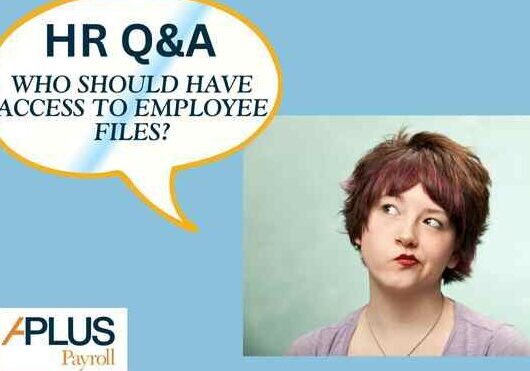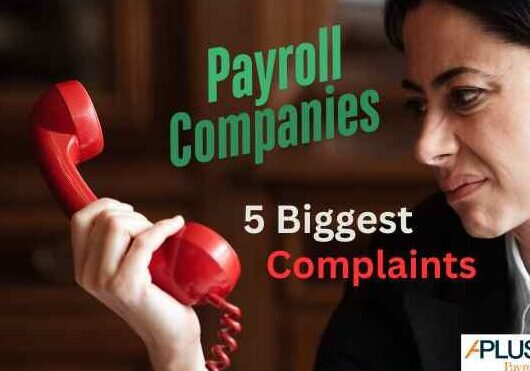What Might Trigger a Department of Labor Audit?
by Paul Devlin
From employee complaints to payroll discrepancies, here a 7 common triggers for a DOL Audit:
Common Triggers for a DOL Audit
The DOL is tasked with enforcing federal labor laws, and several red flags can prompt them to take a closer look at your business. Here are some of the most common triggers:
-
Employee Complaints
A single complaint from an employee can sometimes be enough to spark a DOL audit. Issues like unpaid overtime, discrepancies in wages, or unfair treatment often lead employees to report their concerns. The DOL takes employee complaints seriously, especially if they hint at broader compliance issues. -
Misclassification of Workers
One of the biggest mistakes businesses make is incorrectly classifying workers as independent contractors when they should be employees. Misclassification can result in the company failing to provide benefits, overtime, or even proper tax withholding. The DOL monitors this area closely, and missteps can put you on their radar. -
Payroll Discrepancies
Gaps or irregularities in payroll records often signal a red flag. Examples include not keeping accurate records, inconsistent pay periods, or failure to document overtime. Payroll errors not only frustrate employees but also raise questions about compliance with federal or state wage laws. -
Failure to Comply with Wage and Hour Laws
Non-compliance with the Fair Labor Standards Act (FLSA) is a major audit trigger. This could include failure to pay the federal minimum wage, paying employees late, or not compensating them for all hours worked, including breaks covered under labor laws. -
High Employee Turnover
While high turnover isn’t illegal, it often points to workplace issues that may attract attention. Frequent resignations, terminations, or disputes may encourage the DOL to investigate allegations of a toxic workplace or other violations. -
Industry Type
Some industries, like construction, hospitality, and manufacturing, naturally face higher scrutiny due to historical issues with labor law violations. Simply put, they’re considered “high-risk” industries by the DOL. -
Random Selection or Directed Audits
Occasionally, businesses may be selected for an audit randomly or as part of a broader initiative to review compliance within a specific industry or region. While there’s no specific trigger here, being well-prepared is still paramount.
Potential Consequences of a DOL Audit
If your business is audited and violations are found, the consequences can vary but often include:
- Fines and Penalties: These can range from relatively small amounts for minor record keeping errors to significant sums for wage violations or misclassifications.
- Back Wages: You may be required to pay back wages owed to employees, including overtime or improperly withheld wages.
- Legal Fees: If the violations lead to lawsuits, legal costs can start piling up quickly.
- Business Disruption: Audits consume time and resources that detract from your usual business operations.
- Reputational Damage: An audit can harm your company’s reputation, particularly if the violations come to light publicly.
How to Stay Compliant and Avoid an Audit
While you can’t completely guarantee that your company will never be audited, there are practical steps you can take to reduce the likelihood and ensure you’re prepared if it does happen.
-
Keep Accurate Records
Maintain detailed payroll records, time sheets, employee classifications, and work schedules. Accurate documentation is your best defense in the event of an audit. -
Classify Workers Correctly
Make sure every worker is correctly classified as an employee or independent contractor. Use the DOL’s guidance or consult a payroll or legal expert if you’re unsure. -
Understand Labor Laws
Stay up to date with federal, state, and local labor laws to ensure compliance with minimum wage, overtime, and workplace safety regulations. -
Be Proactive with Communication
Talk openly with employees about payroll policies, benefits, and workplace practices. Encourage them to bring any issues to management before escalating complaints to external entities. -
Audit Your Own Compliance Regularly
Conduct internal audits to identify areas of non-compliance before the DOL finds them. Review employee classifications, check payroll accuracy, and ensure all legal obligations are being met. -
Invest in Payroll and HR Solutions
Using modern payroll software or partnering with a trusted provider can significantly reduce errors and help you stay compliant. Many solutions also offer updates on labor law changes and tools to ensure accurate recordkeeping. -
Train Managers and HR Staff
Ensure that those responsible for payroll and compliance are well-trained and understand the latest regulations. Regular refresher courses can help everyone stay on the same page. -
Address Complaints Quickly
Don’t ignore employee grievances. Quick resolution of complaints can help improve workplace morale and reduce the risk of escalating issues into formal complaints.
Working with a Company like APlus can make this process so much easier. Updates on labor laws and tools to keep accurate record keeping are options we have to keep you in compliance. If you would like to see what we can do to help you, please schedule a demo here



